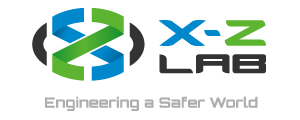Today, scientists strive to improving technology in order to create safer and more accurate measurement to patience on medical exams. With C-View, women can enjoy more comfortable and lower risk during breast care exams. Minimizing and prevention on radiation exposure can go hand-in-hand. On one side, technology can be introduced to lower the radiation exposure. On the other side, technology can be introduced to alarm the potential radiation exposure. With the patented MVT technology inside, rational detectors Rad Targe II, RadPavise, and Area Radiation Monitor from X-Z LAB can response in less than 2 seconds. The real-time accumulated radiation measurement can alert people when the radiation level become unacceptable.
Annual mammograms are strongly recommended for women over 40 as preventive cancer care. Typically, traditional or two-dimensional mammograms are used in breast care. Using X-rays, these methods are able to visualize tumors that are too small to feel. With the advent of 3D mammography, even more detail can be provided: 3D mammography can “detect 40 percent more invasive killer cancers and decrease false alarms by 15 percent” compared to 2D mammography, according to Mary Hayes, Chief of Breast Imaging at the Memorial Healthcare System. Results of a screening trial presented at the annual meeting of the Radiological Society of North America (RSNA) in December further show that combining 3D and 2D mammography improves the detection of breast cancers that are difficult to detect.
Recently, the FDA approved imaging software called C-View that is used in conjunction with 3D mammography. By generating images from data acquired from 3D tomosynthesis, C-View eliminates the need for additional 2D images, allowing women to spend less time with breast compression and receive less radiation exposure. Overall, C-View decreases the dose by 40 percent, bringing more comfort and less risk to women during their exams.
Many scientists today strive to improve technology and create safer, more accurate methods and devices for medical care. Organizations like RSNA bring researchers, practitioners, and manufacturers together to collaborate on the latest innovations in the industry. X-Z LAB will attend this year’s annual meeting, RSNA 2015, as an exhibitor from November 29 to December 3. We will demo our BDM | Pet Detector Module and our radiation detection products at Booth 6610.
